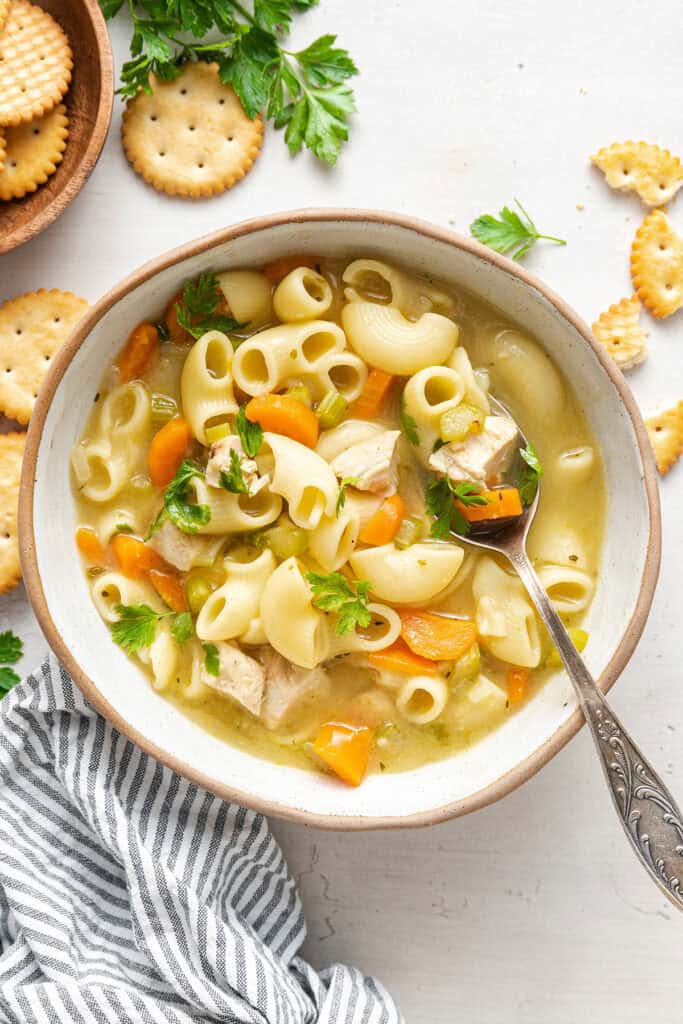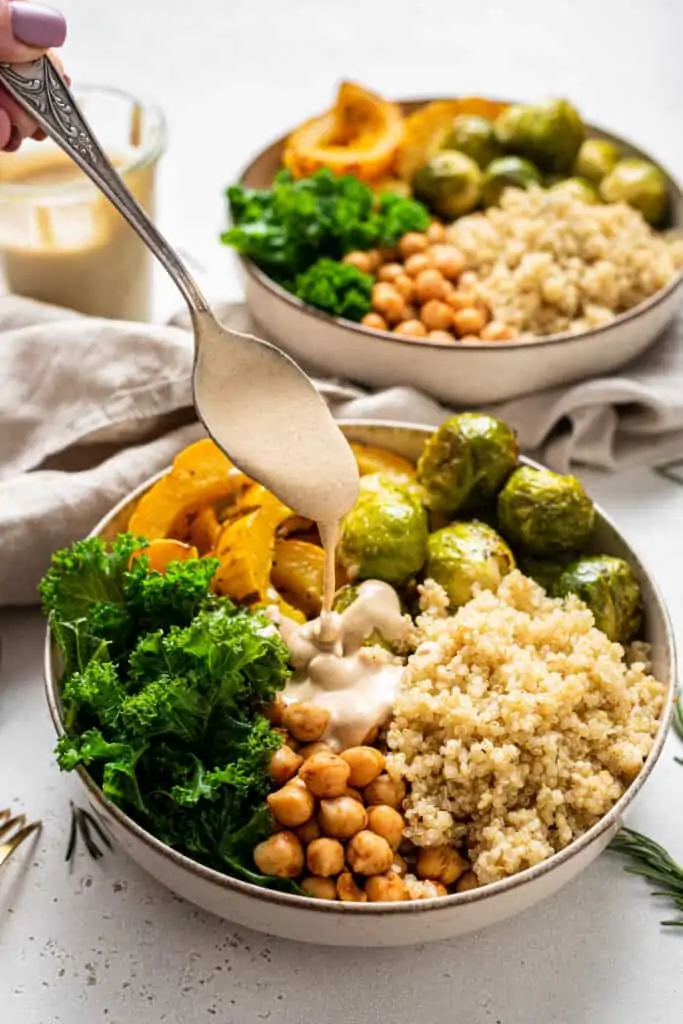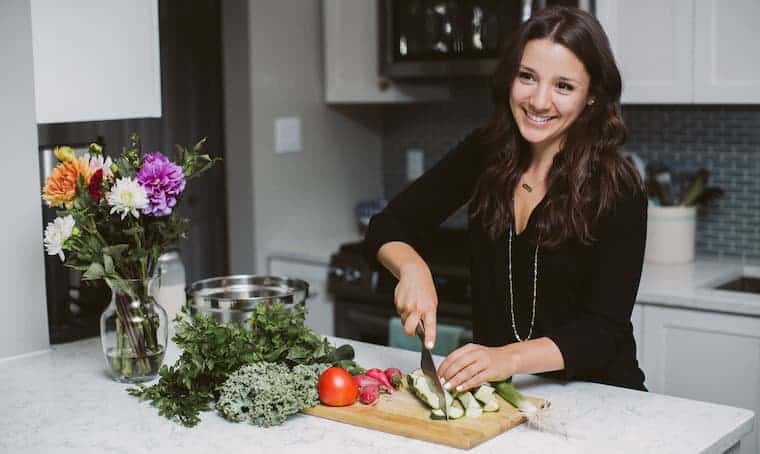Flexitarian has become a common food word in recent years. You’ve probably seen it in articles and food blogs or maybe heard it on TV. Yet despite the increasing popularity of a flexitarian diet, a lot of people aren’t sure what the word means. So here’s a rundown of everything you need to know about being a flexitarian.
What is a Flexitarian Diet?
“Flexitarian” is a combination of the words “vegetarian” and “flexible.” So a flexitarian diet is just flexible vegetarianism that allows for meat consumption on occasion.
In other words, a flexitarian diet focuses on vegetarian foods. Fruits, vegetables, and legumes are at the core of the diet, but flexitarians can still eat meat. It's mostly plant-based, so flexitarians don’t eat a large amount of meat, just a little bit here and there.

What Kind of Foods Can You Eat With a Flexitarian Diet?
No specific foods are off-limits with a flexitarian diet. Most flexitarians focus on healthy, lean meats when they do consume meat. Chicken, turkey, fish, and lean cuts of beef are much more common for flexitarians than pork and fatty cuts of beef, but anything goes.
The point is not to eliminate any foods from your life. Instead, a flexitarian diet highlights moderation.
What Are the Health Benefits of Being Flexitarian?
A flexitarian diet is usually considered to be right up there with the Mediterranean diet in terms of health benefits. Because the diet is primarily plant-based, it helps decrease your risk of heart disease and diabetes. It's also great for weight loss.
It’s also worth noting that flexitarianism is a better diet for the environment than one with more meat. Limiting meat consumption is one of the best ways to lessen your carbon footprint.

What Are the Culinary Benefits of Being Flexitarian?
It's a great lifestyle for people who love to cook, because it offers the health benefits of vegetarianism, without the culinary restrictions. A lot of vegetarians occasionally feel constrained in the kitchen, because they can’t make a certain recipe, or satisfy a particular craving.
With a flexitarian diet, you can. You won’t be making prime rib seven nights a week, but if you find a recipe with meat that looks good to you, or you think one of your go-to dishes could benefit from a little meat, you can make it.
Does Flexitarianism Have Strict Rules?
Flexitarianism lives up to the “flexible” part of its name. There are no strict rules for a flexitarian diet, though there are some general guidelines. When starting out, most people are encouraged to eat less than 28 ounces of meat per week. As you get used to the diet, many flexitarians limit themselves to 9 ounces of meat per week, and 2 days per week with meat consumption.
Those are just guidelines, however. It's all about finding the balance between a plant-based lifestyle and meat eating that works best for you, your health, and your kitchen.

My Approach to the Flexitarian Diet
Over the years, we've talked about a variety of different diets. Paleo, vegetarian, veganism, pescatarian.
And for the last decade or so, I've rested mainly in the pescatarian bucket. My diet consisted of mostly plants, with the addition of eggs and seafood.
And by all accounts, it served me well. I felt pretty good, I was staying mostly at the same weight, and since I'd heard so much about how damaging meat was to our environment, it felt like the “right” move sustainability-wise.
That was until I started to try and get pregnant.
My Pregnancy Journey & How it Changed my Diet
My husband and I decided we were ready to try for a baby in October of 2021. I honestly assumed it would happen quickly because I ate a clean diet and was healthy about 90% of the time. I exercised, I didn't drink too much, loved my smoothies, wasn't a coffee drinker, etc.
So when it didn't happen immediately, I was disappointed, but also realized that was “normal”.
We kept trying.
After 5 months of trying with no success, I decided I wanted to dig a little deeper. I started working with a dietician who specialized in fertility and went to acupuncture regularly.
To my surprise, there was a common recommendation from each practitioner I spoke with:
“You should consider adding meat back into your diet”.
I was resistant at first, but after another unsuccessful month of trying, I decided to give it a go.
I started small, with just a little bit of red meat once or twice a week.
Within two weeks, I felt completely different. I felt more energized, more alert, more awake, more satisfied after my meals, and generally just overall happier with a more flexible approach to eating.
The next month, I found out I was pregnant!
Note: I do just want to specify, it takes diet changes 3 – 4 months to affect an egg, so my diet change did not directly impact this pregnancy!
Sadly, I had a missed miscarriage with that pregnancy, but I have continued to eat meat and dairy and continue to notice positive changes in my health.

My Personal Flexitarian “Principles”
Since moving to a more plant-focused diet 10 years ago, a big reason for that shift was environmental.
I've talked about the vegan diet helps the environment and still believe that it is a great way to contribute to a cleaner planet.
But I also think there is a sustainable way to consume animal products.
So when I'm purchasing meat or dairy products, I make sure they are:
- From a local small farm (no factory farming)
- Eat a grass-fed diet
- Live freely outside
And I do try to limit my intake of red meat to just a few times per week and continue to add lots of plant-based foods into my diet.
What's Next for Simply Quinoa
If you've been a longtime reader of the blog, then you might remember that we used to include meat-based recipes.
I haven't shared meat-based recipes in almost 8 years, but since my personal approach to eating has shifted, I'm going to shift the content of the site a little as well. We'll start by updating those old posts – recreating the recipes, taking new pictures, and resharing them here.
That way, if you have a favorite from way back, you won't lose it! If anything, it will only be better.
Once we've worked our way through those recipes, we'll begin to start creating new recipes that use meat. You can probably expect to see 1 or 2 new meat-based recipes each month.
So that means if you're not a meat-eater, about 80 – 90% of our recipes will still be plant-based/vegetarian.
I can't wait to share more of this journey with you. I hope you are excited!